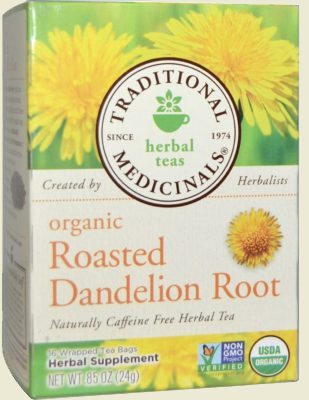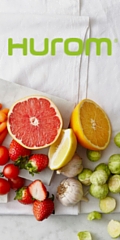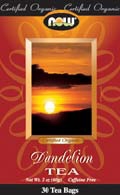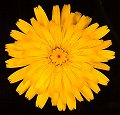Dandelion to DYE for!
Dandelion root makes magenta when using alum as the mordant. Alum is a salt that in its most common form, potassium aluminum sulfate—or potash alum, is used as an additive in small amounts to make pickles and maraschino cherries, and in another common form, sodium aluminum sulfate, is an ingredient in commercially produced baking powder. If you use a tin (a “tin can” is a top commercial choice for storing food) and vinegar mordant you can get purple. Add no mordant to get a yellow dye, the color from using the flowers alone.
Would you like to make your own dandelion-dyed napkins and a matching tablecloth to enhance your enjoyment of every cup of dandelion tea you drink? Well, let’s get started! First, go get some dandelions.
How to dye using dandelions
Using an enamel or stainless steel pot that you will not be using for cooking, soak dandelion roots—or whole plants—overnight in water. Bring to a boil in the same water and then dip them out with a wooden spoon.
Wash the material you wish to dye in warm soapy water and keep it wet. The dye bath is your key to color. If you wish your pigment to be colorfast, put a mordant in the pot with one cup of water: about a half teaspoon of alum mordant for every two ounces of material, taking care not to breathe in the mordant fumes.
Heat—do not boil—gently and stir until dissolved, add 2 quarts water, and stir well to mix. Your saturated textile goes into this bath; bring up to a slow simmer. Turn down the heat as the water begins to boil; simmer 1 hour. Stir occasionally.
Note: When dyeing, ensure the fabric stays completely covered with water, and remember, materials appear darker wet than dry.
Turn off the heat, let cool, squeeze out excess water, and then rinse in warm water to remove the alum. Different dye materials will dye at different speeds. After the dyebath starts to simmer, check in 15 minutes if you wish to have a pale color. Leave the material in the dyebath longer for a deeper or richer color. For full color saturation, leave overnight in the dyebath. This dyeing process can make for a fun dandelion teatime; enjoy experimenting!



